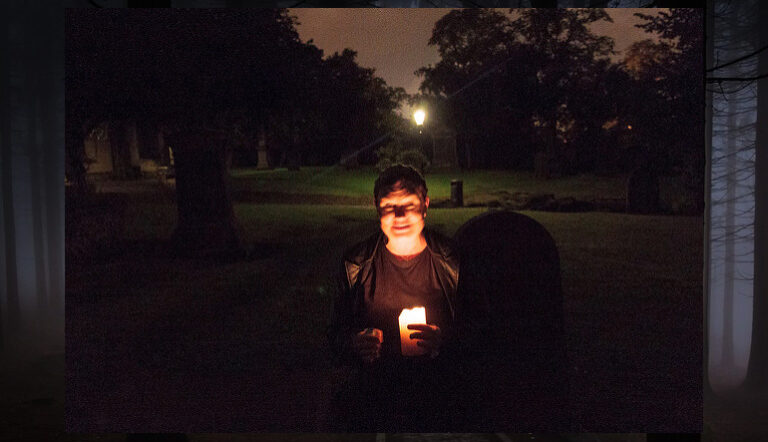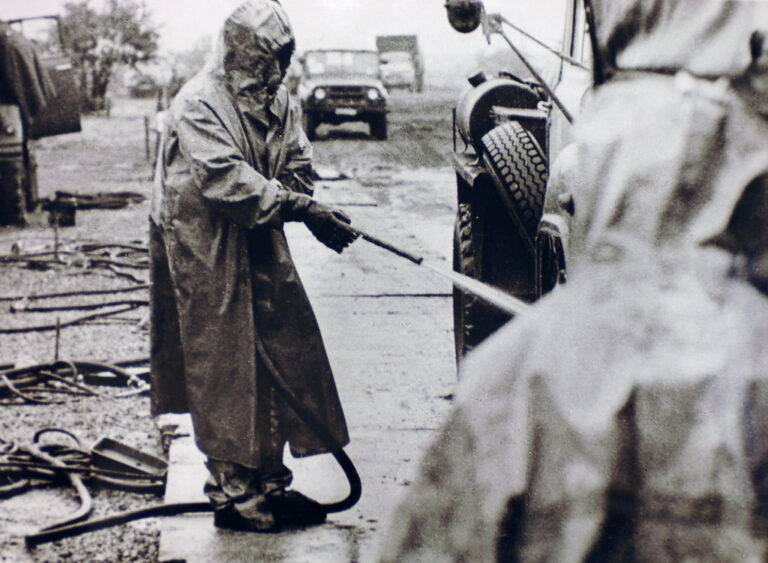Oliver Sacks and the Narratives of Disability
Published in 1985, The Man who Mistook his Wife for a Hat is a collection of clinical tales, twenty-four case studies by the British neurologist Oliver Sacks that reject more scientific approaches to people he calls “the sick,” or those with a range of cognitive and psychiatric conditions. In the preface, he states his intention to revive the tradition of clinical tales from the nineteenth century, to recuperate the power of narrative description as a form of clinical study. His tales recall the writing of Sigmund Freud, who is now well-studied by historians of culture and literature but completely dismissed by psychologists. Sacks found something lacking in the study of the human mind, as scientific methods became increasingly pragmatic and quantitative over the course of the twentieth century. “To restore the human subject at the center,” Sacks writes, “we must deepen a case history to a narrative or tale.” Sacks recognized that stories might have a closer connection to the full complexity of the human condition than science.
When my daughter was born with Down syndrome, I initially had the feeling that my life had gone completely off script. I loved her deeply, how she snuggled into my chest and how her face grimaced and relaxed uncontrollably. But I had internalized stories about people with Down syndrome that provided only vivid scenes of institutions and isolation. My daughter’s life had been reoriented from what I envisioned during pregnancy in ways I had trouble imagining. What would it be like? How would she be perceived and treated by others? What were her possibilities for happiness and fulfillment? I began to look around for some constellation of knowledge that would help orient me toward an unexpected future. It seemed natural to me to turn to narratives, hoping to find what Sacks had called for decades before. Nine years later, I now realize that most narratives tell us more about cultural misconceptions of Down syndrome than providing a full, complex picture of human experience.
A few weeks after my daughter was born, I met with the family support coordinator for the local Down syndrome association. I walked into a Starbucks and saw a middle-aged woman, just a few years older than me, sitting at a table with a large picnic basket filled with baby gifts: a hand-knitted blanket, a stuffed bunny, a rattle. Nestled among them was a small board book called I Can, Can You? by Marjorie W. Pitzer (2004). On each page, pictures of babies and toddlers with Down syndrome are accompanied by simple, repeated text that new mothers are supposed to read aloud to their babies. “I can feed myself, can you?” I read on a page featuring a picture of a sweet girl covered in spaghetti sauce. “I can share, can you?” it says under a photo of two kids drawing on a driveway with chalk. A baby rests on a mat in a striped onesie. The text asks, “I can find my feet, can you?” Like most books for babies, the text is meant for the parents as much as their children. This narrative—as simple as it was—offered me support, responding to the narratives of difference and deficiency I had internalized about my daughter’s potential to swim, draw, and play with blocks.
I searched for more complex narratives that respected Down syndrome and other intellectual disabilities as part of the human condition. They were hard to find. Stories I heard on the news about the young woman included on the high school cheerleading squad or the student awarded homecoming king by his peers only reminded me of how problematic it was that these stories were newsworthy in the first place and how hard they tried to make me feel good that people with Down syndrome were allowed these token moments of inclusion. Other stories I read seemed deeply untrue—that Down syndrome ruins the lives of parents, causing financial ruin and social isolation. And there are only a few memoirs written by people with Down syndrome that share their own perspective.
Tales from the medical community focus on deficiency. Descriptions of Down syndrome, like one found in Siddhartha Mukherjee’s acclaimed book The Gene: An Intimate History from 2016, provide a long list of health conditions and cognitive impairments people with Down syndrome may experience. Mukherjee writes, “Many children die in infancy or childhood, and only a few survive to late adulthood.” Beyond this factual inaccuracy—the life expectancy of people with Down syndrome has actually increased dramatically in recent decades, from twenty-five, when Sacks was writing in the 1980s, to more than sixty today—the statement makes clear that Mukherjee and many others in the medical profession cast Down syndrome as a genetic defect, implying that it is an unfortunate aberration from health that needs to be pitied or cured. Such descriptions are troubling but typical of what new parents encounter the first time they do an internet search for “Down syndrome.” The websites of the Center for Disease Control and the World Health Organization classify Down syndrome as a birth defect and emphasize developmental delays and cognitive differences. Given the narratives of Down syndrome provided by medical sources, there is still a need to write alternative stories that emphasize the things kids like my daughter can do, instead of focusing on all the things she can’t.
Given the deep bond between parent and child, I assumed that memoirs of parents might provide a fuller and more complex picture of humanity. But to counter narratives of medical deficiency, parents have developed plots of spiritual awakening, in which the main character (the parent) is taken from despair to enlightenment by the growth of their child. By following a plot trajectory that is defined by grief, such memoirs often suggest that the child’s main function in the world is to provide a lesson to the parent. These lessons extend into the religious realm: children with Down syndrome are often described as special gifts from God. Some parents assert a kind of clairvoyancy for their children, compensating for the dehumanization of medical narratives with claims to superhuman powers. One mother suggests that “our children can see, sense, do, and know things that we can’t.” She shares a series of what she calls “extraordinary vignettes,” including stories of her young son intuiting what she was thinking from the back seat of a car and her son leaving his body during a dentist appointment. I can relate to one of the conclusions that she draws: “what you see is not always what is happening.” Yet this doesn’t mean that my daughter has supernatural powers. Such a claim denies her humanity as much as the diagnostic narrative of Mukherjee. It also narrowly portrays a child through the single lens of the spiritual needs of the parent. Such tales center the journey of the parent and cast the child as a secondary character. Over and over again, I find myself bristling at the implied assumption that my experience would be like theirs. I sought something more honest, not wrapped up in messages of God’s plan and a perspective transformed.
The last section of The Man who Mistook his Wife for a Hat includes four tales from “The World of the Simple,” which implies that their world is different from ours. One case focuses on a patient named Rebecca, who Sacks describes as a woman with an IQ of sixty or less. His descriptions of her are painfully coarse, describing her as “defective,” “clumsy, uncouth,” and “deformed.” Yet he is also sensitive to what Rebecca needs. He encourages her to stop taking classes and workshops that she does not enjoy and helps her enroll in a theater class, where she thrives.
Sacks’s suggestion that those with cognitive differences inhabit another world reminds me of a story shared with most parents of children with Down syndrome. A nurse handed it to me when I was still in the hospital. “Welcome to Holland” by Emily Perl Kinglsey describes a fabulous trip to Italy that suddenly changes course. “You’ve landed in Holland, and there you must stay.” Essentially, the story encourages parents to let go of their grief about the abrupt change in their plans, missing their trip to Italy. “They haven’t taken you to a horrible, disgusting, filthy place,” Kingsley writes. “Holland has tulips. Holland even has Rembrandts.” I wish we could all live in the same country, in which all its citizens realize they are deeply connected to one other. People with Down syndrome do not live in another world. They have a fundamental right to access the complexity of human experience.
Sacks wrote in an age when terms like “idiot” and “retarded” still carried medical credibility. His text is riddled with observations of what Rebecca can do “despite her low IQ,” implying that this suspect form of assessment is an unquestionably valid way to judge and predict someone’s ability to function creatively and happily. But at times, Sacks struggles with the language of intelligence and admits that it is a poor match with human experience. “The term ‘retarded’ suggests a persisting child, the term ‘mentally defective’ a defective adult; both terms, both concepts, combine deep truth and falsity,” Sacks writes. He also questions the medical ways of understanding those with cognitive differences. “Our tests, our approaches,” he writes, “are ridiculously inadequate. They only show us deficits, they do not show us powers.”
Sacks himself struggles to provide what he calls for in his clinical tales. The world of the people he writes about “lacks unifying abstractions, but is experienced as an extraordinarily rich, deep and concrete reality.” Yet this is acknowledged from a perspective firm in what is “normal” and what is not, what is healthy and what is medically and culturally monstrous. Sacks broadens our perception of the human condition but also deepens our fascination with medical oddities. He wants to uncover what is “especially interesting in the simple,” which fully centers his perspective, placing a kind of responsibility on his patients to entertain him by teaching him something new. But perhaps most importantly, Sacks proceeds without much consideration that such “deficiencies” are the result of low societal expectations rather than inherent ability. Recent memoirs like George Estreich’s The Shape of the Eye (2013), on the other hand, unpack the historically determined conditions of disability and show how his daughter learns to navigate through a complex world, as all humans must do.
Sacks wrote a new preface for The Man Who Mistook with Wife for a Hat for a new edition in 2013, in which he recognizes that these words are “thankfully outmoded today.” In hindsight, Sacks admitted that he no longer agreed with what he wrote and that he has come to see his patients in more “nuanced ways.” His regret testifies to the challenges of writing about human differences from a place of compassion. As a parent of a child with an intellectual disability, I want to use writing to advocate for a better understanding of how my daughter perceives and experiences the world. But I also know that I will inevitably fail to provide that perspective. I can only provide my own.
I came to realize that my experience of motherhood did not fit the plot of maternal awakening and certainly didn’t fit the plot of a tragedy. Both of these fables would cast my daughter in the role of someone to be pitied or an angel from heaven. She is neither; both narratives deny her the dignity of human complexity. Eventually I tossed out the old fables and realized that my daughter and I deserve our own. Yet it seems like the ultimate act of empathy would be to make a space for the voices of those with intellectual differences, moving aside and finding a way for those like my daughter to tell her own story. After all, so much would be misunderstood if her story is completely filtered through mine.


